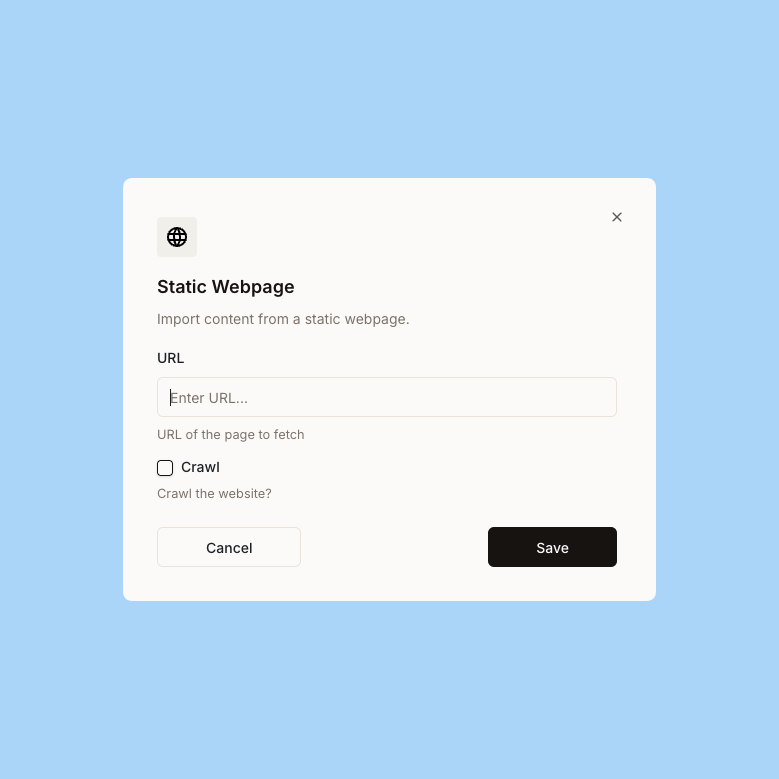Setup
1
Select Website as your source
When adding documents to a knowledge folder, choose Website from the available sources.

2
Enter the URL
Provide the URL of the webpage you want to import.
3
Import content
Ravenna will scrape and import the content from the specified URL.
How it works
Ravenna uses browser rendering to scrape website content, ensuring accurate extraction of:- Main page content and text
- Formatted content (headings, lists, paragraphs)
- Publicly accessible information
- JavaScript-rendered content
Single page import
Single page import
By default, Ravenna imports content from the single URL you provide. This is ideal for:
- Specific documentation pages
- Help articles
- FAQ pages
- Individual blog posts
Website crawling
Website crawling
Enable crawling to import entire documentation sites automatically:
- Automatic discovery: Ravenna follows links within the same domain to discover and import connected pages
- Breadth-first crawling: Pages are crawled level by level, ensuring comprehensive coverage of your site structure
- Page limit: Ravenna crawls a maximum of 100 pages to prevent overloading your website
- Folder structure: Crawled sites are organized under a root folder named after the domain
- Same-domain only: Crawling stays within the original domain to avoid importing external content
Crawling respects the same domain as the starting URL. External links are automatically filtered out.
Requirements
Managing imported content
After import, you can:- Archive pages to exclude them from AI responses
- Move pages from your knowledge folder
Auto sync
When auto-sync is enabled, Ravenna keeps your website content up-to-date:- Page content is re-scraped during sync to capture updates
- Changes to the webpage are reflected in your knowledge base
- If the page becomes unavailable, the sync will fail and you’ll be notified
Auto-sync for websites re-scrapes the same URL to check for updates. It does not discover new pages or follow links.

